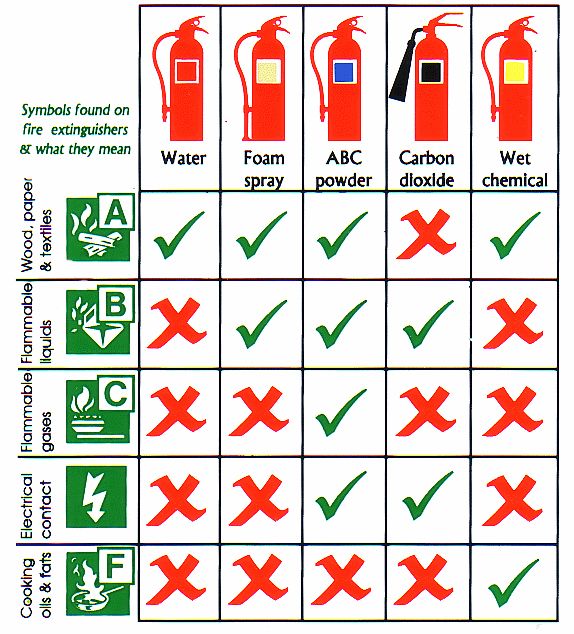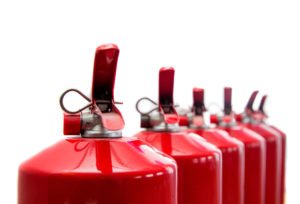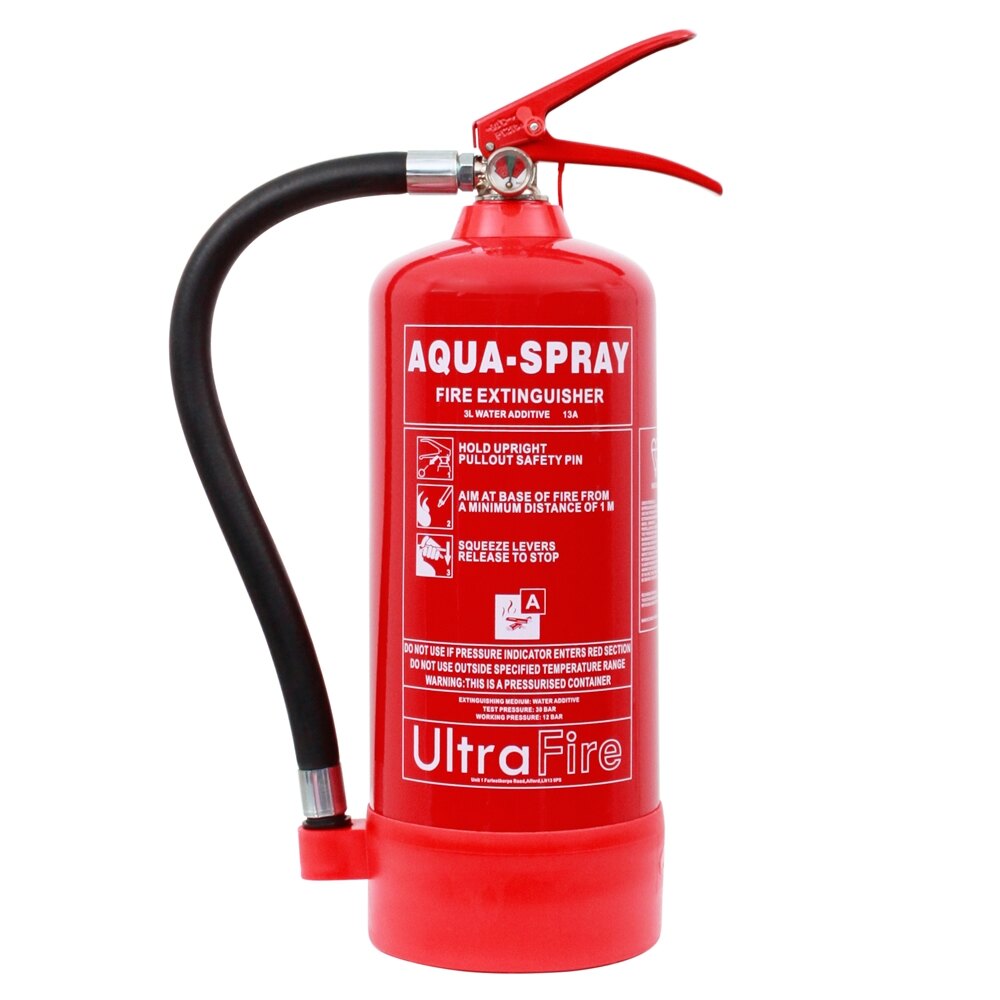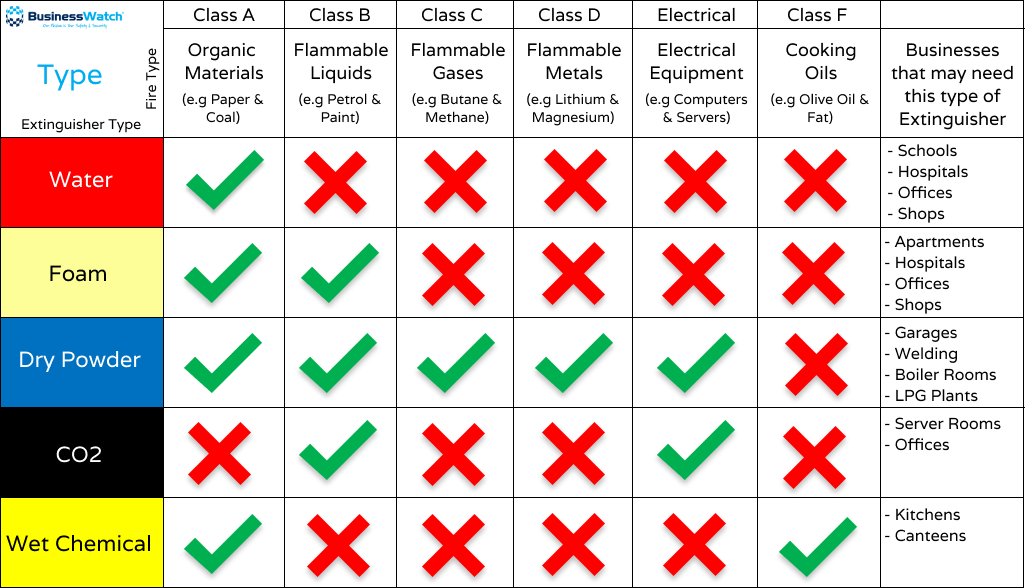class b fire is caused by
Some common examples of Class B fire damage include fires involving oil paint gasoline and similar flammable liquids. In the United States all flammable liquids and gases are Class B.

Find Out What The Symbols On Your Fire Extinguisher Actually Mean Foremost Promotions
What Does Class B Fire Mean.

. Fire damage in this class involves fires related to flammable liquids as well as solid materials that can liquify. The presence of these liquids which are also known as hydrocarbon fuels represent the fuel aspect of the fire triangle heat fuel and oxygen and provide the materials necessary to begin develop and maintain a fire. To extinguish a Class B fire you want to cut off the oxygen.
Most of these liquids have a high carbon content and the compounds in them and. Class B fire refers to a fire involving flammable liquids such as petroleum gasoline kerosene petrol diesel octane etc paint alcohol solvent oil and tar etc. What is a Class B material.
A Class B fire is anything started by a flammable liquid such as petrol or alcohol. Flammable Liquids and Gases. 2012 Farlex Inc.
Class A fires involve ordinary combustible materials such as cloth wood paper rubber and many plastics. For example propane natural gas gasoline and. Beyond knowing your fire hazard classification you also need to understand your area hazard classification.
They are normally caused by combustible solid objects like wood paper fabric and textiles. Class B fires involve flammable liquids and gases especially fuels like petroleum or petroleum-based products such as gasoline paint and kerosene. Flammable liquids include petroleum-based oils or paint tars alcohol oils solvents gasoline and kerosene.
Fire class B Is a type of fire caused by flammable liquids. Flammable gases such as butane or propane are. The type of flammable liquids involved in Class B.
Flammable Liquids and Gases. Once the electrical item is removed the fire changes class. Class B fires are caused by flammable liquids like gasoline kerosene and paint.
Caused by electrical equipment such as TVs computers faulty wiring frayed cables broken electrical appliancestools short circuits overloading multi-adaptor plug sockets hairdryers extension leads etc. That normally do not leave any embers or residues or very low amounts of residues. They can ignite by heating them up to extreme temperatures or with a simple spark.
These substances are common in industrial environments but they can also be found in residential and commercial settings. Blanketing with O2-deprivation eg CO2 dry chemical or foam. According to the US Fire Administration Class B fires involve ignitable liquids or gases like petroleum grease alcohol paint propane or gasoline.
Flammable gases include butane and. You can use carbon dioxide gas to dilute the oxygen available and stop the burning. Extinguishers with an A rating are designed to extinguish fires involving these ordinary combustible materials.
What is a Class B fire caused by. Its important to note however that cooking fats and oils are not included in this class. Flammable Liquids andor Gases The next fire type you need to be aware of is the ones started by flammable liquids.
Class B Fires. Fire caused due to flammable liquids such as petrol diesel paint paraffin oils other than cooking oils etc. Because ordinary combustibles are so common in house fires authorities usually recommend that you get a fire extinguisher that includes at least an AB rating Most common fire extinguishers are class ABC.
Fire caused due to flammable gases such as butane methane propane etc. Class B Fire Damage. Here are some related question people asked in various search engines.
Fire class C Is a type of fire which caused by flammable gases. Because a solid stream of water can cause the fuel to scatter. These materials are typically found in.
The best solution to these fire hazards are dry chemical powder or clean agent gas. Class B fires caused by flammable liquids such as paint turpentine or petrol among others. Such as petrol alcohol and kerosene-it is extinguished by fire blanket if it is small and dry powder foam or carbon dioxide if it is large.
Class B fires involve flammable and combustible liquids such as gasoline alcohol oil-based paints lacquers. Water is not effective against Class B fires. In fire classes a Class B fire is a fire in flammable liquids or flammable gases petroleum greases tars oils oil-based paints solvents lacquers or alcohols.
Examples of flammable liquids include petrol oil paraffin alcohol and certain paints. These include alcohols oil gasoline and paint. But this classification typically does not include fires involving cooking oils or grease.
The only difference is the fuel. Class B hazards include Flammable liquids greases and gas. Liquids called hydrocarbon fuels constitute a component of the fire triangle heat fuel oxygen and they provide fire materials needed by the crew to survive begin develop and control a fire.
A good way to put out a Class A fire is to use a water based extinguisher. A Class A fire is the most common kind of fire that is likely to start. So a class B fire is very dangerous as it is the burning of flammable liquids.
Any of the following may be the fuel source for a Class B fire. Class B Fires Extinguish by Depleting Oxygen. This will spread the flames.
In order to have a fire you need fuel oxygen heat and a chemical reaction. Other gases that are highly flammable are propane and butane which are common causes of Class B fires. Smothering the fire with bicarbonate baking soda or potassium carbonate will also work.
The fuel for a Class B is a combustible gas or liquid. Class B fires are fires which involve flammable or combustible liquids. Or by flammable gases such as methane and propane.
Common liquid based fuel sources include petroleum based oils and paints kerosene and gasoline. A fire caused by flammable or combustible liquids and gases oil gasoline. The Class B fire is defined as one that uses a flammable liquid or gas as its fuel base.
Any fire caused by flammable or combustible liquids is classified as a Class B fire. Fire caused due to burning metals such as lithium sodium potassium magnesium titanium etc. Class B fires are known to result from an explosion of flammable liquids or gases.

Find Out What The Symbols On Your Fire Extinguisher Actually Mean Foremost Promotions

Types Of Fire Extinguishers And What They Do Piper Fire Protection Inc Types Of Fire Fire Extinguishers Fire Prevention

Abcs Of Fire Extinguishers Fire Prevention Services The University Of Texas At Austin

Fire Extinguisher Types Uses How To Choose

Most Fire Extinguishers Used In The Hospital Are Class A B C 1 A Used On Wood Cloth Paper 2 B Used On Grease Fire Extinguisher Extinguisher Fire

The 6 Types And Classes Of Fire And How To Attack Them Haspod

Fire Extinguisher Types How To Choose The Right Class

Fire Extinguisher Types How To Choose The Right Class
Types Of Fires Fire Hazards Video Lesson Transcript Study Com

Fire Extinguisher Types Colour Codes Classes

The Different Types Of Fires Classes Prevention Reaction

What Is A Class B Fire The Best Suited Fire Extinguisher East Rand Fire

What Are The Different Types Of Fire Extinguishers Uk Businesswatch

Types Of Fires Kidde Fire Safety

The 6 Types And Classes Of Fire And How To Attack Them Haspod

Fire Extinguisher An Overview Sciencedirect Topics

The Types Of Fire Extinguishers Classifications Water Foam Co2

What Are The 5 Different Classes Of Fires Vanguard

A Chart Outlining Types Of Fire Extinguishers Types Of Fire Fire Extinguishers Extinguisher